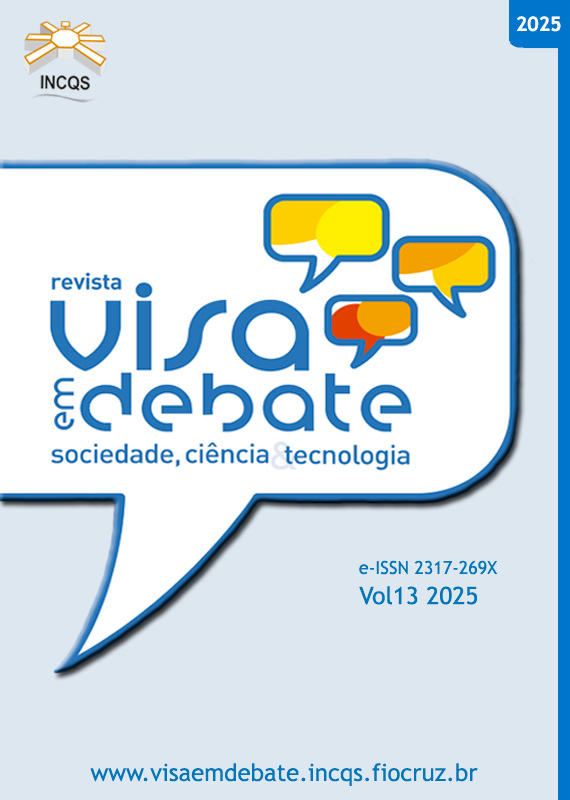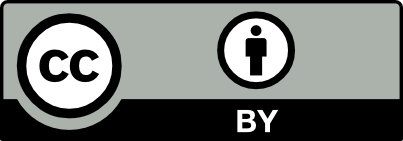Performance of an rFC-based assay for endotoxinquantification in hyperimmune sera
Vigil Sanit Debate, Rio de Janeiro, 2025, v.13: e02447 | Published on: 23/10/2025
DOI:
https://doi.org/10.22239/2317-269X.02447Keywords:
Recombinant Factor C, Endotoxins, Hyperimmune Serum, In Vitro TestAbstract
Introduction: Endotoxin contamination poses a significant risk to the safety of pharmaceutical products, particularly those administered parenterally. Ensuring patient safety requires strict adherence to the regulatory standards for sterile and pyrogen-free pharmaceutical formulations. Objective: This study aimed to evaluate the feasibility of using the Recombinant Factor C (rFC) method, specifically Endolisa®, for detecting bacterial endotoxins in hyperimmune sera (pentavalent antibothropic, anti-rabies, and tetanus antitoxin). Method: Samples were spiked with endotoxin solutions at concentrations ranging from 0.05 to 10 EU/mL and analyzed using the rFC kit. The key performance parameters were thoroughly evaluated, such as specificity, detection and quantification limits, precision, accuracy, and linearity. Each concentration was tested a minimum of five times across six points. Results: The method demonstrated precision with relative standard deviations ranging from 3.5% to 19.0%, accuracy for endotoxin recovery between 94.0% and 134.0%, and linearity across the concentration range of 0.05 to 5 EU/mL for the three sera. The detection and quantification limits were established at 0.05 EU/mL. Conclusions: The results confirm that the rFC method provides accurate, precise, specific, and linear quantification of endotoxins in hyperimmune sera within the range of 0.05 to 5 EU/mL at 1:100 dilution. However, for samples spiked with 10 EU/mL (1:100 dilution), the method did not meet the compendial criteria.
Downloads
References
1. Schletter J, Heine H, Ulmer AJ, Rietschel ET. Molecular mechanisms of endotoxin activity. Arch Microbiol. 1995;164(6):383-9.https://doi.org/10.1007/BF02529735
2. Sandle T. Assessing non-endotoxin microbial pyrogens in relation to pharmaceutical processing. J GXP Compl. 2015;19(1):1-14.
3. Maloney T, Phelan R, Simmons N. Saving the horseshoe crab: a synthetic alternative to horseshoe crab blood for endotoxin detection. PLOS Biol. 2018;16(10):1-10.https://doi.org/10.1371/journal.pbio.2006607
4. Agência Nacional de Vigilância Sanitária – Anvisa. Farmacopeia brasileira. 7th ed. Brasília: Agência Nacional de Vigilância Sanitária; 2024[acess Apr 24, 2025]. Available from: https://www.gov.br/anvisa/pt-br/assuntos/farmacopeia/farmacopeia-brasileira
5. Fennrich S, Hennig U, Toliashvili L, Schlensak C, Wendel HP, Stoppelkamp S. More than 70 years of pyrogen detection: current state and future perspectives. Altern Lab Anim. 2016;44(3):239-53.https://doi.org/10.1177/026119291604400305
6. Ding JL, Ho B. A new area in pyrogen testing.Trends Biotechnol. 2001;19(8):277-81.https://doi.org/10.1016/S0167-7799(01)01694-8
7. Krisfalusi-Gannon J, Ali W, Dellinger K, Robertson L, Brady TE, Goddard MKM et al. The role of horseshoe crabs in the biomedical industry and recent trends impacting species sustainability. Front Mar Sci. 2018;5:185.https://doi.org/10.3389/fmars.2018.00185
8. Bolden JS, Smith KR. Application of recombinant Factor C reagent for the detection of bacterial endotoxins in pharmaceutical products. PDA J Pharm Sci Technol. 2017;71(5):405-12.https://doi.org/10.5731/pdajpst.2017.007849
9. Bolden J, Knight M, Stockman S, Omokoko B. Results of a harmonized endotoxin recovery study protocol evaluation by 14 BioPhorum Operations Group (BPOG) member companies. Biologicals. 2017;48:74-81.https://doi.org/10.1016/j.biologicals.2017.05.003
10. Ministério da Ciência, Tecnologia e Inovações (BR). Resolução normativa Concea Nº 12, de 20 de setembro de 2013. Baixa a diretriz brasileira para o cuidado e utilização de animais para fins científicos e didáticos – DBCA. Diário Oficial União. 25 set 2013.
11. Goh JY, Weaver RJ, Dixon L, Platt NJ, Roberts R. Development and use of in vitro alternatives to animal testing by the pharmaceutical industry 1980–2013. Toxicol Res. 2015;4:1297-307. https://doi.org/10.1039/C5TX00123D
12. International Conference on Harmonisation of Technical Requirements for Registration of Pharmaceuticals for Human Use – ICH. Evaluation and recommendation of pharmacopoeial tests for use in the ICH regions on bacterial endotoxin test general chapter Q4B Annex 14. Geneva: International Conference on Harmonisation of Technical Requirements for Registration of Pharmaceuticals for Human Use; 2012.
13. US Pharmacopeia – USP. General chapter, bacterial endotoxins test. Rockville: US Pharmacopeial Convention; 2023.https://doi.org/10.31003/USPNF_M98830_02_01
14. Council of Europe. European pharmacopoeia: alternative methods for control of microbiological quality. 11th ed. Strasbourg: Council of Europe; 2022.
15. US Pharmacopeia - USP. Pharmacopeial forum: use of recombinant reagents in the bacterial endotoxins test: photometric and fluorometric methods using recombinantly derived reagents. 46th ed. Rockville: US Pharmacopeia; 2020.
16. Council of Europe. European pharmacopoeia: test for bacterial endotoxins using recombinant factor C. 11th ed. Strasbourg: Council of Europe; 2022.
17. Tindall B, Demircioglu D, Uhlig T. Recombinant bacterial endotoxin testing: a proven solution. BioTechniques. 2021;70(5):1-11.https://doi.org/10.2144/btn-2020-0165
18. Grallert H, Leopoldsedar S, Schuett M, Kurze P, Buchberger B. Endolisa: a novel and reliable method for endotoxin detection. Nat Met. 2011;8:3-5.https://doi.org/10.1038/nmeth.f.350
19. Marius M, Vacher F, Bonnevay T. Comparison of bacterial endotoxin testing methods in purified pharmaceutical water matrices. Biologicals. 2020;67:49-55.https://doi.org/10.1016/j.biologicals.2020.07.001
20. Marius M, Vacher F, Bonnevay T. Comparison of LAL and recombinant factor C endotoxin testing assays in human vaccines with complex matrices. PDA J Pharm Sci Technol. 2020;74(4):394-407.https://doi.org/10.5731/pdajpst.2019.010389
21. Williams KL. Specificity in the recombinant factor C test for endotoxin. European Pharmaceutical Review. Apr 26, 2018.
22. Council of Europe. European pharmacopoeia: monocyte-activation test. 11th ed. Strasbourg: Council of Europe; 2025.
23. Solati S, Zhang T, Timman S. The monocyte activation test detects potentiated cytokine release resulting from the synergistic effect of endotoxin and nonendotoxin pyrogens. Inn Immun. 2022;28(3-4):130-7.https://doi.org/10.1177/17534259221097948
24. Gimenes I, Spoladore J, Paranhos BA, Romasco T, Di Pietro N, Piattelli A et al. Assessment of pyrogenic response of medical devices and biomaterials by the monocyte activation test (MAT): a systematic review. Int J Mol Sci.2024;25(14):1-18. https://doi.org/10.3390/ijms25147844
25. Carson D, Myhill S, Palmieri E, Necchi F, Rijpkema S, Micoli F et al. Development of a monocyte activation test as an alternative to the rabbit pyrogen test for mono- and multi-component shigella gmmabased vaccines. Microorganisms. 2021;9(7):1-12.https://doi.org/10.3390/microorganisms9071375
26. Silva VF, Guedes Junior DS, Silveira IA, Almeida AS, Conte FP, Delgado IF et al. A comparison of pyrogen detection tests in the quality control of meningococcal conjugate vaccines: the applicability of the monocyte activation test. Altern Lab Anim. 2018;46(5):255-72.https://doi.org/10.1177/026119291804600506
27. Council of Europe. European pharmacopoeia: Bacterial endotoxins. 11th ed. Strasbourg: Council of Europe; 2022.
28. Instituto Butantan. Soro antitetânico: solução injetável. São Paulo: Instituto Butantan; 2024[access May 6, 2025].Available from: https://consultas.anvisa.gov.br/#/bulario/
29. Instituto Butantan. Soro antibotrópico (pentavalente): solução injetável. São Paulo: Instituto Butantan; 2024[access May 6, 2025]. Available from: https://consultas.anvisa.gov.br/#/bulario/
30. Instituto Butantan. Soro antirrábico: solução injetável. São Paulo: Instituto Butantan; 2024[access May 6, 2025].Available from: https://consultas.anvisa.gov.br/#/bulario/
31. US Pharmacopeia – USP. General chapter, bacterial endotoxins tests using recombinant reagents. USP-NF. Rockville: US Pharmacopeial Convention; 2025.https://doi.org/10.31003/USPNF_M16015_02_01
32. Kang DH, Yun SY, Eum S, Yoon KE, Ryu SR, Lee C et al. A study on the application of recombinant Factor C (rFC) assay using
biopharmaceuticals. Microorganisms. 2024;12(3):516.https://doi.org/10.3390/microorganisms12030516
33. BioMérieux. Endolisa: ensaio de detecção de endotoxinas com base na tecnologia ELISA (606168). 2nd ed. Munchen:BioMérieux; 2017.
Downloads
Published
Data Availability Statement
The contents underlying the research text are contained in the submitted manuscript and in the doctoral thesis available at: https://repositorio.usp.br/item/003218090
Issue
Section
License
Copyright (c) 2025 Health Surveillance under Debate: Society, Science & Technology

This work is licensed under a Creative Commons Attribution 4.0 International License.
COPYRIGHT ALLOWANCE The author (s) hereinafter designated as the ASSIGNOR hereby assign and transfer, free of charge, the ownership of the copyrights related to this ARTICLE to the Vigilância Sanitária em Debate: Sociedade, Ciência & Tecnologia (Health Surveillance under Debate: Society, Science & Technology) – Visa em Debate, represented by FUNDAÇÃO OSWALDO CRUZ, established at Av. Brasil, nº 4365, Manguinhos, Rio de Janeiro, RJ, Brazil, CEP 21045-900, under the conditions set out below: (a) The terms and conditions set forth in this Agreement shall apply to the following: 1. The ASSIGNOR declares that they s(he) is (are) the author (s) and owner (s) of the copyrighted property of the ARTICLE submitted. 2. The ASSIGNOR declares that the ARTICLE does not infringe the copyrights and / or other property rights of third parties, that the disclosure of images (if any) has been authorized and that they s(he) assume(s) full moral and / or property liability for its content, before third parties. 3. THE ASSIGNOR assigns and transfers all copyrights relating to the ARTICLE to the ASSIGNEE, especially the rights of editing, publication, translation into another language and reproduction by any process or technique. The ASSIGNEE becomes the exclusive owner of the rights related to the ARTICLE, and any reproduction, totally or partially, is prohibited in any other means of publicity, printed or electronic, without prior written authorization from the ASSIGNEE. 4. The assignment is free and, therefore, there will be no remuneration for the use of the ARTICLE by the ASSIGNEE.






